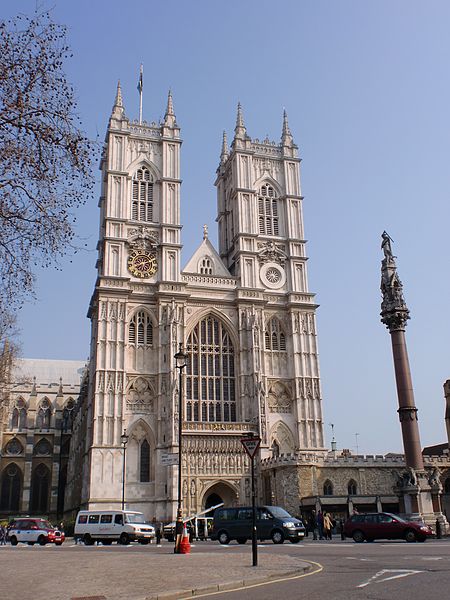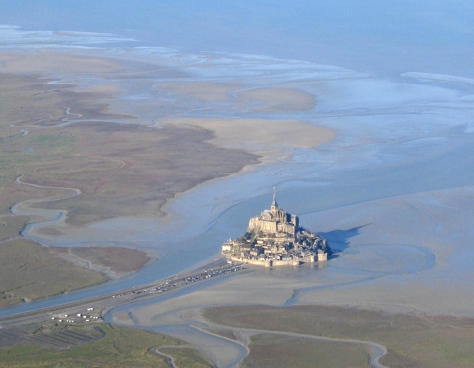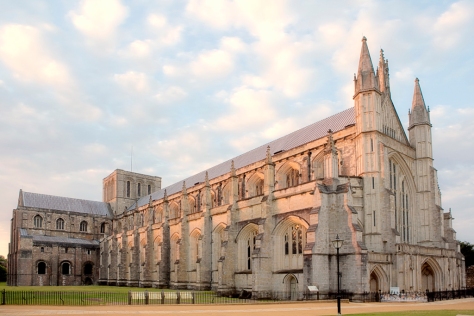
William Rufus was the third son and first successor of William the Conqueror. Born around 1060, his father was then Duke of Normandy, only adding England to his domains six years later when he was triumphant at the Battle of Hastings, becoming King William I.
Young William became known as ‘Rufus’ on account of his ruddy complexion or red hair, though it is difficult to determine whether this nickname was widely used during his lifetime. In accordance with the customs of the time and of his status in society, he would have had a good education, as well as military training and religious instruction. He became his father’s favourite son, preferred above his older brothers, Robert and Richard, and his younger brother, Henry.
A few years after his father became King of England, William Rufus found himself promoted in the succession by the death of his brother Richard. His good relationship with his father also proved to be in stark contrast to the attempts of the first-born Robert (nicknamed ‘Curthose’ on account of his ‘short legs’, or stature) to assert his independence as impatient heir to the duchy of Normandy, which led to an open quarrel between father and son in c.1078, though they were reconciled soon afterwards. In the 1080s, William spent time on both sides of the Channel, usually in his father’s company.

In 1087, William the Conqueror was injured in battle, and on his deathbed at Rouen, he pondered the inheritance he would bequeath to his sons. It seems to have been accepted that Robert would succeed him in Normandy, but just days before his death it is claimed that he dispatched his loyal son William to claim the throne of England. As such, his namesake was crowned by Lanfranc, the Archbishop of Canterbury, at Westminster Abbey on 26 September 1087. Thus, at the age of twenty-seven years, Rufus became King William II.

The majority of the barons and the prelates of the English Church supported William, but some, such as Odo, bishop of Bayeux (who, as William the Conqueror’s half-brother, held substantial territory in England, including Kent) rose in rebellion in the name of the ‘rightful heir’, Robert Curthose, in 1088. William quashed this early threat, and set about consolidating his authority following it. The younger brother, Henry, divided his loyalty between the King of England and the Duke of Normandy during this time, perhaps ‘hedging his bets’ or more likely exhausting more than once the patience and generosity of the two rulers.

In his private life, William Rufus was denounced by contemporary chroniclers for his immorality, and he was suspected of being homosexual. It is true that he never married, though this would have been expected of him for the benefits of diplomacy and to secure the succession. His court may have lacked the presence of a queen and her ladies, but it was reported that the men in the king’s company wore their hair long and dressed extravagantly. Historians are inconclusive about the nature of William’s sexuality; there are no records of him having sired any illegitimate children if he had mistresses, though neither are there any specific references to any male favourites. It is worth noting that the majority of contemporary chroniclers were celibate clergymen, which may have led them to have exaggerated their accounts of the bachelor-king.
By 1090, Normandy was in a state of anarchy, and William Rufus sent troops to intervene in the north of the duchy. In February 1091, he personally crossed the Channel from Dover or Hastings, making Eu his base. Yet, when the time came to face his brother, it was in peace rather than war, for they reached terms in the treaty of Rouen. Each were to receive lands from the other and each was named as the other’s heir. William also aided Robert in suppressing a rebellion in Maine by their younger brother, Henry, who was forced to take sanctuary in the monastery of Mont St Michel. The two not only accepted his plea for surrender in April 1091, but permitted his freedom also, and it is likely he went into exile in France.

The reconciliation of king and duke was further cemented when the two sailed to England in July 1091 to deal with threats from the Scots and Welsh. It was Robert who mediated a peace between William and King Malcolm III of Scotland, though shortly afterwards the brothers quarrelled and the elder sailed back to Normandy before the year was through, and hostilities with Scotland and Wales would continue. One notable achievement of William during this time was that he took back the old English territory of Cumbria from the Scots with the conquest of Carlisle in 1092, which enabled him to strengthen England’s northern border.
William’s meeting with Robert in Normandy in 1094 did little to improve relations between the two. Henry, meanwhile, was restored to the favour of his brother, the King of England, who had to face another Welsh revolt and a baronial uprising.
In 1096, Robert embarked on the First Crusade to the Holy Land and a papal legate negotiated that William would act as guardian of Normandy in his absence, a role that led him to spend much time on the continent, until Robert began his journey back to Normandy in 1099.
In 1100, William Rufus was hunting in the New Forest, England, when a stray arrow pierced his heart. Although generally accepted as an accident, some historians have claimed that the king was assassinated. Whatever the motives, it was not Robert Curthose but one of William’s companions on that day who seized the initiative – his younger brother, Henry, who rode first to Winchester to secure the royal treasury and then to London to be crowned at Westminster Abbey, adjacent to the royal palace that houses William II’s longest-standing legacy, the Great Hall. The new king, Henry II, had his brother buried in Winchester Cathedral.

* * * * *
The main source for this article was Frank Barlow’s comprehensive biography ‘William Rufus’ (available for free on Google Books) and the entry for William II on the Oxford Dictionary of National Biography. The pictures used are in the public domain (Wikipedia).


Not sure that I’d call striking his obese stomach against the pommel because his horse reared when it trod on a cinder while William was burning the French border town of Mantes “injured in battle”.
In Jan-Feb 1088, the royal court went to York so that the new King William II could officially found Alan’s St Mary’s Abbey York. The great magnates and bishops witnessed the foundation charter. But some must have been very uncomfortable as Alan made this an occasion to reflect on the sorrows that the Normans had caused to the English: moreover, he had done this previously towards the end of the Conqueror’s reign.
It’s not the case that most barons supported William II. Quite the contrary. Of the four greatest magnates, only one, Alan Rufus, opposed the rebellion. (Mind you, he may have inadvertently provoked it by harping on about Norman guilt.) The list of barons who are known to have allied with William II is quite brief, mostly comprising the Royal household knights (the Royal bodyguard) and Alan’s men. William was fortunate that he had not yet offended England’s churchmen, so the bishops of York and Worcester also fought for him. But in the early stages, William’s situation was quite dire: he was confined to an area near London while the rebels ravaged the Royal estates across the entire country. This was when St Calais abandoned the King to protect his own lands at Durham.
William authorised Alan to take all necessary measures to counter the rebellion. Alan had cultivated singularly good relations with the English so the local Fyrd gladly helped destroy the West Midlands army of the perfidious Roger de Montgomery, Earl of Shrewsbury, forcing him to pretend to change sides while secretly sending provisions to his three sons who had not.
Archbishop Thomas of York led an army to suppress the northern rebels, probably in concert with Alan’s half-brothers Ribald and Bardolph and his brother-in-law Enisant Musard who were lords in Richmondshire.
Alan captured numerous baronial armies and fortresses in the eastern counties, rejoining the King who was still at London. Together they marched on Tonbridge, then Rochester, only to learn that Bishop Odo, the ringleader, had fled to Pevensey Castle where his brother Count Robert of Mortain was awaiting the arrival of a fleet from Normandy.
The English navy had blockaded the southern ports, especially Pevensey, and intercepted the advance Norman fleet at sea, capturing or destroying every ship. Duke Robert Curthose blamed the outcome on “bad weather”.
During the protracted siege of Pevensey castle, William de Warenne, newly appointed Earl of Surrey, a few years earlier injured at Sainte-Suzanne, was fatally wounded and taken to Lewes where he died. When Pevensey fell, Odo promised to order Rochester’s surrender, but when he arrived the guards captured his escort and brought Odo into the castle.
All the roads to Rochester were blocked and siege towers erected. The siege ended suddenly when a “pestilence” broke out within the castle so the defenders found their situation unbearable and surrendered. As they marched out, the crowds jeered and called for the rebels to be hanged. William II was of like mind, but his counsellors, ie Alan Rufus, commended mercy. Odo was sent on the earliest ship to Normandy, forbidden to enter England again. Most of the other barons were forgiven.
St Calais was still holed up in Durham, having captured some of the rebels’ cattle.
William sent Alan, with other relatives, at the head of an army to arrest the bishop. Evidently Alan had plans of his own: he used his deputed Royal authority to sign a safe-conduct for St Calais, guaranteeing that no matter the outcome of the treason trial, no harm would come to his person.
St Calais duly surrendered and was brought south. He was held at Wilton Abbey. At the trial in Salisbury castle, St Calais’s too-clever arguments in defence were not going well, and the King and courtiers threatened him. So he brandished the safe-conduct, causing an uproar as this was the first anyone outside Alan’s entourage had heard of it. Alan accepted personal responsibility, but defended his decision. When the King demanded that he recant his position, Alan offered to resign. Check!
St Calais was found guilty, but in the circumstances that Alan had constructed, the King was unable to pass sentence. So he entered protracted negotiations with Alan, finally seeing things Alan’s way. Alan escorted St Calais to port and saw him sail off to exile in Normandy.
What followed was the political sabotage of Normandy by undermining the counsel of Odo of Bayeux. This enabled the English army in February 1091 to invade and defeat the duchy with great efficiency, ie swiftly and with minimal loss of life. Odo’s power was finished, as was Normandy’s, a mere 25 years after the triumph at Hastings.
The monastery of Mont St-Michel is the resting place of Duke Conan I of Brittany, a male-line ancestor of Alan Rufus. Conan’s daughter Judith was the paternal grandmother of William the Conqueror.